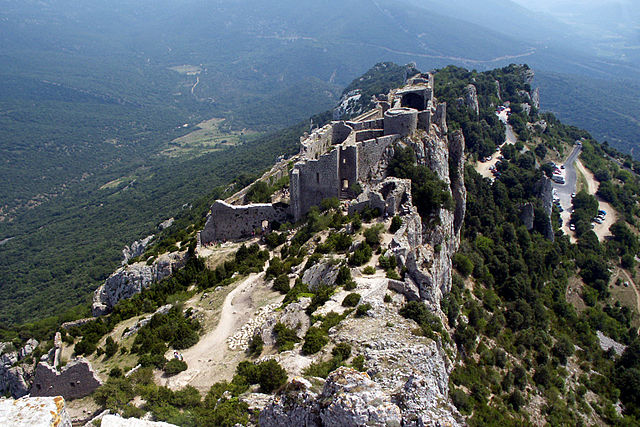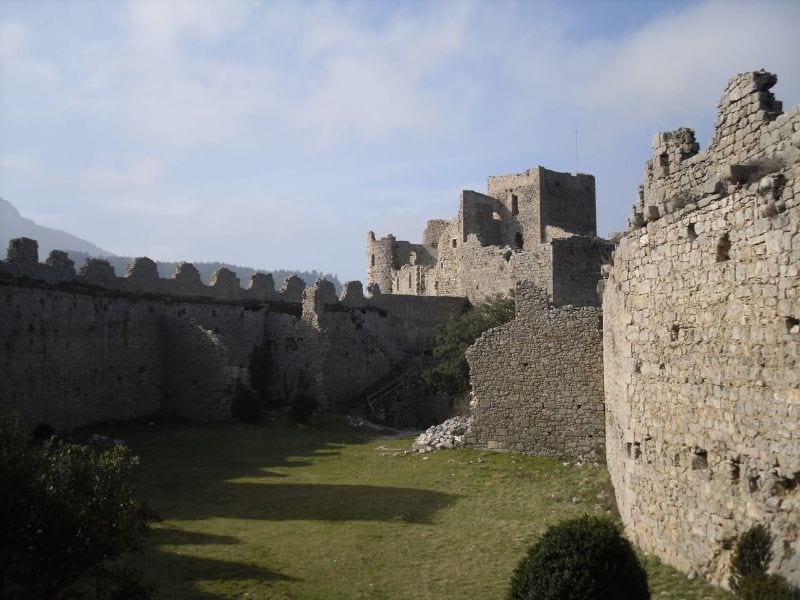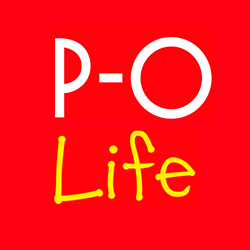Three of the “five sons of Carcassonne.”

In 1258, with the Treaty of Corbeil, Quéribus, Peyrepertuse and Puilaurens were right on the frontier between France and Aragon.The HQ was Carcassonne and, with Aguilar and Thermes, they were known as the “five sons of Carcassonne”.
Veritable eagles nests, owned by noblemen sympathetic to the Cathar religion, they became the last resort for the Cathars as the Albigensian Crusade threatened to wipe them off the face of the earth.
It is possible to visit all three in a very full day but, to be honest, they warrant considerably longer.
Perched on their unbelievable mountainous rocky outcrops, the castles of Quéribus and Peyrepertuse dominate the beautiful rolling vineyards of Maury and Cucugnan.
Château de Quéribus

From Estagel take the N117 towards Maury and follow the signs to Cucugnan.
As you climb the Grau of Maury towards the border with the Aude you will see Château de Quéribus on the right, built on its 728m high rocky pinnacle in the XI Century.
The last stronghold of the Cathar defence, it fell in 1255. Hard to imagine a more dominant stronghold. It has overlooked the Corbieres, Fenouilledes and Plains of Roussillon for centuries, guarding the mountain pass of the Grau de Maury. A mere 15 – 20 men were all that was required to man the castle, so clever were its systems of defence.
It remains to this day a monument to the dramatic events that have marked the turbulent history of this border country.
Château de Peyrepertuse

From Quéribus, Château de Peyrepertuse is easily visible, an amazing fortress seeming to grow out of sheer rock on the skyline. Eight hundred metres high, occupied since Roman times, the castle itself is first mentioned in 1070 when it was owned by the Catalan Counts of Besalú.
It formed an important part of the Cathar defences and a secret passage ending in a movable ladder afforded vital access. It can still be found, the last part of the climb a vertiginous cliff “voie escalade”.
It continued to be enlarged and improved until 1659 when the border changed and it lost its strategic importance. However it remained in use till the Revolution when it was deserted by the fleeing nobles and, like so many other French castles, was sold to the State.
Now it can be visited and enjoyed. It appears inaccessible but from the ticket office a 1/4 hour narrow, shady walk through the scented box brings you to the entrance keep of San Jordi.
The steep steps of Saint Louis, cut into the rock, lead to the chapel of St Jordi from which, clearly visible is Château de Quéribus, the Forca Real and the lookout tower of Tautavel. History oozes from the ancient walls and in spring cowslips and fritillaries flower between fallen stones.
Château de Puilaurens

Château de Puilaurens rises high above the village and the valley of the Boulzane. A noble and fairytale castle, it is easily accessible by a 20 minute shaded walk from the car-park.
The area is rich with evidence of human habitation since Palaeolithic times and “Mont Ardu”, the old name of the mountain on which the castle stands, appears on a map dated 958. It was used by the Cathars for refuge in 1245/46 and, as with the other “sons of Carcassonne”, was one of the main border defences and setting for endless battles between the French and the Spanish.

After the border changed it was maintained for a while by a feeble garrison of veterans before falling into disrepair and disuse. Now the castle is cared for and fascinating to visit.
The Square Tower dates from the time of the Crusade against the Cathars. The so- called “White Lady” Tower, where Blanche de Bourbon was reputed to have stayed on her way south to her ill-fated marriage with Peter of Castile, has a duct through the wall that acts as a speaking tube.

Aged fourteen in 1353, after three days of marriage, Peter abandoned her in favour of Maria de Padilla, imprisoning poor Blanche, who, at the age of twenty two, was assassinated.
One can only hope she made good use of her speaking tube and enjoyed the marvellous views over the village, the 1904 railway viaduct and the Forest of Fanges from the battlements.


[…] A day out in Cathar Country Three fantastic medieval castles, three of the “five sons of Carcassonne.” In 1258, with the Treaty of Corbeil, Quéribus, Peyrepertuse and Puilaurens were right on the frontier between France… […]